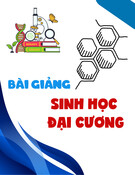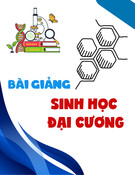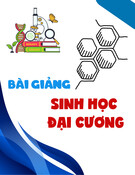
Mini-Review
Theme: Emerging Role of Pharmacogenomics (PGx) and Big Data on Development of Biologics
Guest Editors: Shraddha Thakkar and Nisha Nanaware-Kharade
Recent Advances in Application of Pharmacogenomics for Biotherapeutics
Pramod B. Mahajan
1,2
Received 10 December 2015; accepted 8 March 2016; published online 23 March 2016
Abstract. Biotherapeutics (BTs), one of the fastest growing classes of drug molecules,
offer several advantages over the traditional small molecule pharmaceuticals because of their
relatively high specificity, low off-target effects, and biocompatible metabolism, in addition to
legal and logistic advantages. However, their clinical utility is limited, among other things, by
their high immunogenic potential and/or variable therapeutic efficacy in different patient
populations. Both of these issues, also commonly experienced with small molecule drugs,
have been addressed effectively in a number of cases by the successful application of
pharmacogenomic tools and approaches. In this introductory article of the special issue, we
review the current state of application of pharmacogenomics to BTs and offer suggestions for
further expansion of the field.
KEY WORDS: biologicals; biotherapeutics; genetic variability; pharmacogenomics.
INTRODUCTION
Protein therapeutics, sometimes also referred to as
Bbiologicals^are generally defined as therapeutic protein(s)
derived from a biological source (1). Historically, biologicals
mainly constituted blood and blood products, and were
extracted directly from organisms that produced them
naturally. However, in recent times, a number of novel
biotherapeutics have been invented and approved for clinical
use. This is a result of the advent first, and, convergence later,
of several independently developed technologies such as
genetic engineering, monoclonal antibody production, heter-
ologous transfer, and expression of genes in multicellular
eukaryotes, bioinformatics, as well as large-scale production
and characterization of recombinant proteins (2–4). Together,
these technologies are also called Bbiotechnology^. Arrival of
the Bomics^era has only accelerated the pace and number of
novel recombinant therapeutic proteins invented, and broad-
ened their applications (5,6). Thus, in recent years, the terms
Bbiologics^,Bbiopharmaceuticals^,orBbiotherapeutics^have
been used interchangeably to refer to polypeptide drugs
produced using one or more of these biotechnological
approaches (7,8). For the sake of consistency, in this review
article, the term Bbiotherapeutics^(BTs) is used to describe
various recombinant protein drugs.
Our goal for this article is to provide the readers an
overview of the current status of application of
pharmacogenomics (PGx) for improving the health outcomes
of BTs. We will begin with a brief background on BTs and
PGx applications for small drug molecules, highlighting the
lessons learnt with reference to BTs. This will be followed by
description of select examples of BTs with actionable
pharmacogenomic information that is resulting in improved
efficacy reduced adverse reactions of those BTs. We will
conclude with some thoughts on the challenges and opportu-
nities for PGx application to this growing class of drug
substances.
BACKGROUND
Although biologic products such as blood proteins have
been used as drugs for centuries (2,4), recombinant insulin
(Humulin®), the first FDA-approved BT, was marketed only
in 1982 (9). Since then, tremendous advances have been made
in the discovery and development of this class of drug
molecules (2–4). As a result, currently over 200
biotherapeutics are available in the US and European
markets (10). The anti-inflammatory BT Humira® has
claimed a spot among the top three best-selling drugs for
the past 4 years in a row (11). As summarized in Table I,in
2014, eight of the top ten drugs sold globally were BTs, and
these eight drugs collectively generated revenues of over 61
billion (12), with several BTs acquiring the Bblockbuster
drug^status. This extraordinary growth in the number of BTs
is expected to continue for the foreseeable future, as reflected
by increasing number of new BTs licensed over the past
14 years (Fig. 1), as well as by entry of many Bbiosimilars^or
1
Department of Pharmaceutical, Biomedical and Administrative
Sciences, College of Pharmacy and Health Sciences, Drake Univer-
sity, Des Moines, Iowa 50311, USA.
2
To whom correspondence should be addressed. (e-mail:
Pramod.Mahajan@Drake.edu)
The AAPS Journal, Vol. 18, No. 3, May 2016 ( #2016)
DOI: 10.1208/s12248-016-9903-4
605 1550-7416/16/0 00-605/0 #2016 American Association of Pharmaceutical Scientists3

Bbiobetters^into this market segment (13–16). Several
reasons that account for the rapid expansion of this class of
drugs are outlined below.
A. High specificity: In addition to the obvious differ-
ences in molecular composition and dynamic struc-
ture, this important functional characteristic primarily
distinguishes BTs from their low molecular weight
counterparts. Proteins carry out a unique (or rela-
tively few) well-defined function(s) in living organ-
isms, limiting their involvement largely to those
reactions/pathways. This specificity in itself is suffi-
cient to improve the therapeutic efficacy of BTs when
compared to small molecules.
B. Low off-target effects: A consequence of the high
functional specificity of BTs is the low off-target effect
as these molecules are not likely to interact with
pathways that they do not normally participate in.
C. Biocompatible metabolism: Many BTs (e.g., enzymes
or receptors) are used to essentially replace a
defective or non-functional biomolecule. Thus, their
interactions are more compatible with other biomol-
ecules and organelles associated with the metabolic
reactions they are expected to Brepair^. Additionally,
pathways naturally utilized to metabolize cellular
proteins will also metabolize most BTs into Bnormal^
metabolites such as the constituent amino acid and
carbohydrate metabolites (exception: conjugated
small molecule drugs). In most instances, these
metabolites are recycled to the body’s normal meta-
bolic flux, further reducing possibility of any adverse
effects.
D. Broad therapeutic potential: Because BTs are de-
signed based on their biological functions, they often
fill unmet medical needs, be those in the area of
complex metabolic disorders, or genetic defects.
E. Logistic and legal advantages: Rapid technological
advances in discovery, development, and manufactur-
ing of BTs, coupled with streamlined regulatory
approvals and extended patent positions are expected
to add to this growing list of drug molecules entering
the market.
Despite these advantages, BTs also face significant
challenges such as high costs, immunogenicity, and vari-
able efficacy. While the cost factor may be addressed
through the market forces such as logistical improvements
and competition, the later two issues, unless addressed
scientifically, may severely limit applications of BTs.
Immunogenicity, an issue predominantly affecting thera-
peutic outcomes of BTs, is a subject of extensive research
over the past few decades and has been reviewed in detail
recently (17–22). However, variable efficacy is an issue
common to both the small molecule drugs as well as BTs.
During the past few years and especially since the
completion of the human genome project in 2003, PGx
has helped address issues related to the variable efficacy
as well as the adverse effects of several small molecule
drugs and some BTs. Specifically, the successful applica-
tion of PGx to small molecule drugs offers important
lessons. As discussed below, a brief summary would be
useful for further enhancing therapeutic outcomes of BTs.
Lessons Learned from PGx of Small Molecule Therapeutics
Although an elegant argument for the concept of
Bchemical individuality^was made as early as 1902 (23), the
actionable applications of genetic variability for managing
drug safety were reported only in the middle of the twentieth
century for the small molecule antimalarial primaquine
(24,25) and the anti-tuberculosis drug isoniazid ((26), refer-
ences therein). A major web-based PGx resource,
PharmGKB (27), lists over 200 examples where genetic
information is included in the labels of drugs approved by
Table I. Biotherapeutics Global Sales for 2014
*
Rank** Drug Active ingredient Sales (Billions)
1 Humira® (Adalimumab) 13.021
3 Remicade® (Infliximumab) 10.151
4 Enbrel® (Eternacept) 9.12
5 Lantus® (Insulin glargine) 8.152
6 MabThera®/Rituxan® (Rituximab) 7.356
7 Avastin® (Bevacizumab) 6.841
9 Herceptin® (Trastuzumab) 6.69
61.331
*Adopted from Philippidis, A. (ref. (2))
**Rank based on global sales of all types of drugs in 2014
*Data ada
p
ted from ref. 6; Numbers for 2015 u
p
to A
p
ril 30.
0
2
4
6
8
10
12
14
16
Licensed drugs
Ye a r
Fig. 1. Biotherapeutics licenses during 2001–2015
*
.
*
Data adapted
from ref. (6); Numbers for 2015 up to April 30
606 Mahajan

one or more of the four international organizations viz. the
US Food and Drug Administration or FDA (28), the
European Medicines Agency or EMA (29), the Pharmaceu-
ticals and Medical Devices Agency or PMDA, Japan (30),
and Health Canada/Santé Canada or HCSC (31). Of these,
105 examples exhibit associations with haplotypes-multiple
variations that are inherited together (27).
However, just listing genetic associations with a specific
drug is not enough. Translation of the genetic data must be
made to establish and implement a decision-making process
for the clinicians. Therefore, as a next step, the dosing
guidelines/recommendations are defined through a collabo-
rative effort of the Clinical Pharmacogenomics Implementa-
tion Consortium in collaboration with the Pharmacogenomics
Research Network (PGRN). These guidelines and recom-
mendations have been designed mainly to assist clinicians in
using the genetic information while making decisions regard-
ing the drug choice and or drug dosing (27). Four levels of
evidence (A through D) have been established. Evidence
levels A and B are required to recommend a clinical action
such as choice of a different dose of the same drug or choice
of an alternative drug. Evidence ranked at level C does not
lead to any changes in prescription recommendations because
either (i) the genetics based recommendation does not make
a difference in the therapeutic outcome; or (ii) therapeutic
alternatives do not exist, are less effective, or are more toxic
than the original drug. Evidence level D indicates that the
published results are inconclusive, weak, even conflicting, and
warrant no further clinical recommendation. To date, 68
examples of drug labels that contain dosing guidelines and
recommendations based on evidence ranked as A or B have
also been published (ref. (27) and references therein).
From PGx of Small Molecule Therapeutics to PGx of BTs
Analysis of these 200+ examples reveals that majority of
these recommendations are for small molecule drugs. Fur-
thermore, variations affecting therapeutic outcomes of these
drugs are in genes required for their absorption, distribution,
metabolism, or excretion. Thus, most of the early targets of
this search for variations for Phase I enzymes (32–35)or
Phase II enzymes (36,37) transporters (36,38–44) and recep-
tors (45–53). However, there is a small but significant number
of examples of application of PGx to BTs (Table II). Of the
14 examples of genomic biomarkers shown in Table II, over
85% represent BTs used for cancer treatment. Two of these
(Adcetris® and Zevalin®) are antibody drug conjugates, and
one (Ontak®) represents a chimeric BT- recombinant human
IL-2 fused in frame with diphtheria toxin. Benlysta® and
Krystexxa® are used to treat systemic lupus erythematosus
and treatment refractory gout, respectively. Notable by the
absence in this group shown in Table II are examples of BTs
used for replacement therapy in genetic defects associated
with metabolic enzymes (e.g., glucocerebrosidases), peptide
hormones (e.g., growth hormone), or blood protein compo-
nents (e.g., Factor VIII).
Genetic biomarkers associated with these BTs are
applicable for patient stratification and/or for improving
efficacy. Thus, CD20 positive status has been used to improve
efficacy of Bexxar® and Gazyva® for treatment of non-
Hodgkin lymphoma patients (27), ERBB2 overexpression has
been used to treat breast cancer patients with Herceptin®
and EGFR or KRAS expression status has been applied to
classify and treat cancer patients with Erbitux® or Vectibix®.
On the other hand, G6PD status has been used to screen out
patients from treatment with Elitek® or Krystexxa® to avoid
adverse effects such as severe hemolysis.
Table III presents three examples of BTs where PGx
may be applied to drug-dosing decisions. Thus, CPIC
guidelines for Elitek® recommend using G6PD variant status
to decide if the patient receives Elitek® therapy or the
alternative therapy with allopurinol (54). Similarly, CPIC
guidelines have been published for Pegasys® and Pegitron®,
BTs used for hepatitis C virus treatment (55). Thus, Muir
et al. offer a Bstrong recommendation^for using pegylated
interferon alpha -2a or -2b therapy for hepatitis C patients
with the ‘favorable response’allele CC at rs12979860; an
equally strong recommendation is offered against using the
pegylated interferon alpha-2a or -2b therapy for the unfavor-
able response alleles CT or TT of rs12979860 (55). These two
examples also point to the general trend seen with PGx of
small molecules, where initial focus has been on finding
variations in genes associated with the metabolic and/or
signaling pathways involved in the action of the therapeutic
agents.
In summary, the examples outlined in Tables II and III
certainly expand the applications of PGx to BTs. However,
these drugs represent a small fraction of the current and
growing list of BTs on the market (10–12). Several technical,
logistic, and regulatory factors have been cited as possible
barriers (56–63). Some of these challenges appear to be
common both small and large molecule drugs. For example,
observations from the retrospective studies must be sup-
ported by well-designed prospective studies inclusive of
randomized study cohorts as well as validation cohorts. On
the other hand, some challenges are unique to protein
therapeutics because of their unique pharmacokinetic and/or
pharmaco-dynamic properties (57,58). Compared to somatic
variation studies, large-scale investigations on association of
germline variations with therapeutic outcomes of BTs are
difficult to conduct due to limited patient populations.
Quantitative (high vs. low antibody titer) as well as qualita-
tive (neutralizing vs. non-neutralizing antibodies) heteroge-
neity of the immune response seen in a population of patients
to a BT adds another dimension of complexity (59–63). The
use of biosimilars and biobetters may further complicate data
analysis and interpretation when addressing immunogenicity
of the BTs. Finally, as seen with various small molecule drugs
(64), multiple variations, each with only marginal influence on
the therapeutic outcome of a BT, may not justify practical
implementation of the results.
CONCLUDING REMARKS
Current trends project a significant expansion in the role
of BTs for treating various metabolic, immunologic, and
genetic disorders (2–6). However, despite many advantages
outlined above, a large body of evidence has also accumu-
lated which underscores limitations in clinical application of
BTs (reviewed in refs. (17–22)). Given the complex and
multifactorial nature of the immune responses to BTs (65),
additional efforts and resources would have to be devoted to
607PGx of Biotherapeutics

Table II. Biotherapeutics with Associated Genetic Markers in the Labels
Drug name Active ingredient Genetic biomarker Clinical use Comments
ADCETRIS® Brentuximab Vedotin TNFRSF8 Oncology An antibody drug conjugate of chimeric
anti-CD30 IgG1 coupled to a microtubule
disrupting agent MMAE
ARZERRA® Ofatumumab TNFSF13B Oncology Efficacy in CD20 (product of MS4A1)
expressing B cell chronic lymphocytic
leukemia (CLL) and non-Hodgkin
lymphoma
BENLYSTA® Belimumab TNFSF13B Autoimmune disorders TNFSF13B also known as BLyS or BAFF,
a B-lymphocyte stimulator protein
overexpressed in systemic lupus
erythematosus patients
BEXXAR® Tositumomab MS4A1 Oncology Efficacy in CD20 (product of MS4A1)
positive non-Hodgkin lymphoma patients
ERBITUX® Cetuximab EGFR,KRAS Oncology Efficacy in EGFR negative, KRAS wild
type cancers
GAZYVA® Afutuzumab or Obinutuzumab, MS4A1 Oncology Efficacy in CD20 (product of MS4A1)
positive non-Hodgkin lymphoma patients
HERCEPTIN® Trastuzumab ERBB2 Oncology Efficacious only in patients overexpressing
ERBB2 (HER-2) gene product
KADCYLA® Ado-Trastuzumab Emtansine ERBB2 Oncology Efficacious only in patients overexpressing
ERBB2 (HER-2) gene product
KRYSTEXXA® Pegloticase G6PD Rheumatology Individuals negative for G6PD may
experience severe hemolysis
ONTAK® Denileukin Diftitox CD25 (IL2RA) Oncology Chimeric protein containing enzymatically
active and membrane translocation
domain of diphtheria toxin linked
to human IL-2; Efficacy in CD25
positive T cell lymphoma patients
PERJETA® Pertuzumab ERBB2 Oncology Efficacious only in patients overexpressing
ERBB2 (HER-2) gene product
RITUXAN® Rituximab MS4A1 Oncology Efficacy in CD20 (product of MS4A1)
positive non-Hodgkin lymphoma patients
VECTIBIX® Panitumumab EGFR,KRAS Oncology Efficacy in EGFR negative, KRAS wild
type cancers
ZEV
ALIN® Ibritumomab tiuxetan MS4A1 Oncology An antibody drug conjugate of anti-CD-20
IgG with Yttrium-90 radionuclide; efficacy
in CD20 (product of MS4A1) positive
patients particularly those with relapsed
or refractory, low-grade or follicular
B cell non-Hodgkin’s lymphoma
MS4A1, membrane-spanning 4-domains, subfamily A, member 1; CD20, B-lymphocyte antigen CD20; CYB5R1-4, cytochrome b5 reductase 1;
G6PD, glucose-6-Phosphate dehydrogenase; EGFR, epidermal growth factor receptor; KRAS, v-Ki-ras2 Kirsten rat sarcoma viral oncogene
homolog; ERBB2, v-erb-b2 erythroblastic leukemia viral oncogene homolog 2; HER-2, human epidermal growth factor receptor 2; CD25
(IL2RA), interleukin 2 receptor, alpha; IL28B (INF-λ-3), interleukin 28 B (Interferon lambda- 3); MMAE, monomethyl auristatin E; TNFSF,
tumor necrosis factor receptor superfamily. Information in this table adapted and compiled from ref. (27,50)
Table III. Biotherapeutics with PGx-Based Dosing Guidelines
Drug name Description Genetic biomarker Dosing guidelines Ref.
ELITEK® Rasburicase CYB5R1-4, G6PD Individuals negative for G6PD may experience severe hemolysis;
CYB5R variants with reduced CYB5R activity may also exhibit
increased hemolysis
(54)
PEGASYS® Peginterferon alpha 2a IL28B rs12979860 Hepatitis C genotype 1 patients with the rs12979860 CC genotype
have increased likelihood of response (higher SVR rate) to
peginterferon-alpha-containing regimens as compared to patients
with rs12979860 CT or TT genotypes
(55)
PEGINTRON® Peginterferon alpha 2b IL28B rs12979860 Hepatitis C genotype 1 patients with the rs12979860 CC genotype
have increased likelihood of response (higher SVR rate) to
peginterferon-alpha-containing regimens as compared to patients
with rs12979860 CT or TT genotypes
(56)
608 Mahajan

understand the genetic determinants of the immunogenic
response of BTs. Recently, this approach has been applied to
understand genetic basis of immunogenicity to recombinant
Factor VIII, a BT used for treatment of hemophilia A (66–
70). A growing body of literature points to influence of
human genetic variability on efficacy as well as tolerability/
adverse effects of a number of vaccines (reviewed in ref.
(59,63,71,72)). Specifically, associations of variations in human
genes for HLA, cytokines, or cytokine receptors, molecules
associated with mounting immune response, have been impli-
cated in determining response to hepatitis B vaccine (73–76),
hepatitis C vaccine (77–79) as well as a number of childhood
vaccines including rubella (80), mumps (81,82), and measles (81–
83), as well as malaria (84). However, further scrutiny with
prospective studies would be needed to translate this
information into clinical recommendations. Application of
newer genomic as well as bioinformatics tools for collecting and
analyzing data on large-scale (85,86) would prove useful for
discovering and conclusively proving association of genetic
variations (somatic or germline) to efficacy and/or adverse effects
of BTs. Readers are directed to the accompanying articles in this
issue for a detailed discussion of these and similar approaches.
ACKNOWLEDGMENTS
I wish to thank Drs. Nisha Nanaware-Kharade and
Shraddha Thakkar for inviting me to participate in this
discussion and giving me the opportunity to review this topic.
REFERENCES
1. The US FDA. http://www.fda.gov/drugs/informationondrugs/
ucm079436.htm#ther_biological Accessed 15 Sept 2015.
2. Dimitrov DS. Therapeutic proteins. Therapeutic proteins: methods
and protocols. In: Voynov V, Caravella JA, editors. Methods in
molecular biology, vol. 899. New York: Humana Press; 2012. p. 1–26.
3. Kinch MS. An overview of FDA-approved biologics medicines.
Drug Discov Today. 2015;20(4):393–8. doi:10.1016/
j.drudis.2014.09.003..
4. Carter PJ. Introduction to current and future protein therapeutics: a
protein engineering perspective. Exp Cell Res. 2011;317(9):1261–69.
5. Kling J. Fresh from the biotech pipeline—2013. Nat Biotechnol.
2014;32(2):121–4. doi:10.1038/nbt.2811.
6. Morrison C. Fresh from the biotech pipeline—2014. Nat
Biotechnol. 2015;33(2):125–8. doi:10.1038/nbt.3136.
7. Rader RA. (Re)defining biopharmaceutical. Nat Biotechnol.
2008;26(7):743–51. doi:10.1038/nbt0708-743.
8. Leader B, Baca QJ, Golan DE. Protein therapeutics: a summary
and pharmacological classification.NatRevDrugDiscov.
2008;7(1):21–39. Review.
9. White Junod, S. (2007) Celebrating a milestone: FDA’s approval
of first genetically-engineered product: http://www.fda.gov/
aboutfda/whatwedo/history/productregulation/
selectionsfromfdliupdateseriesonfdahistory/ucm081964.htm
Accessed 29 Sept 2015.
10. Walsh G. Biopharmaceutical benchmarks 2014. Nat Biotechnol.
2014;32(10):992–1000. doi:10.1038/nbt.3040.
11. C & E News Supplement Sept 2014 http://cen.acs.org/content/
dam/cen/supplements/CEN-supplement092014.pdf.
12. Philippidis A. (2015) The top 25 best-selling drugs of 2014. http://
www.genengnews.com/insight-and-intelligence/the-top-25-best-
selling-drugs-of-2014/77900383/#gsaccess. Accessed 15 Sept 2015.
13. Bui LA et al. Key considerations in the preclinical development
of biosimilars. Drug Discov Today. 2015;20 Suppl 1:3–15.
doi:10.1016/j.drudis.2015.03.011.
14. Tsuruta LR et al. Biosimilars advancements: moving on to the
future. Biotechnol Prog. 2015;31(5):1139–49. doi:10.1002/
btpr.2066.
15. Kumar R, Singh J. Biosimilar drugs: current status. Int J Appl
Basic Med Res. 2014;4(2):63–6. doi:10.4103/2229-516X.136774.
16. Müller Ret al. The advent of biosimilars: challenges and risks.
Swiss Med Wkly. 2014;144:w13980. doi:10.4414/smw.2014.13980.
17. Wadhwa M et al. Immunogenicity assessment of biotherapeutic
products: an overview of assays and their utility. Biologicals.
2015;43(5):298–306. doi:10.1016/j.biologicals.2015.06.004.
18. Rup B et al. ABIRISK consortium. Standardizing terms defini-
tions and concepts for describing and interpreting unwanted
immunogeni-city of biopharmaceuticals: recommendations of the
innovative medicines initiative ABIRISK consortium. Clin Exp
Immunol. 2015;181(3):385–400. doi:10.1111/cei.12652.
19. Yin L et al. Therapeutic outcomes, assessments, risk factors and
mitigation efforts of immunogenicity of therapeutic protein
products. Cell Immunol. 2015;295(2):118–26. doi:10.1016/
j.cellimm.2015.03.002.
20. Kloks C et al.Afit-for-purpose strategy for the risk-based
immunogenicity testing of biotherapeutics: a European industry
perspective. J Immunol Methods. 2015;417:1–9. doi:10.1016/
j.jim.2015.01.003.
21. Bendtzen K. Immunogenicity of anti-TNF-αbiotherapies: I.
Individualized medicine based on immunopharmacological evi-
dence. Front Immunol. 2015;6:152. doi:10.3389/
fimmu.2015.00152.
22. Deehan M et al. Managing unwanted immunogenicity of
biologicals. Autoimmun Rev. 2015;14(7):569–74. doi:10.1016/
j.autrev.2015.02.007.
23. Garrod A. The incidence of alkaptonuria: a study in chemical
individuality. Lancet. 1902;2:1616–20.
24. Dern RJ et al. The hemolytic effect of primaquine. I. The
localization of the drug-induced hemolytic defect in primaquine-
sensitive individuals. J Lab Clin Med. 1954;43(2):303–9.
25. Buetler E. The hemolytic effects of primaquine and related
compounds: a review. Blood. 1959;14(2):103–39.
26. Evans DA, Manley KA, McKusick VA. Genetic control of
isoniazid metabolism in man. Br Med J. 1960;2(5197):485–91.
27. Whirl-Carrillo M. Pharmacogenomics knowledge for personal-
ized medicine. Clin Pharmacol Ther. 2012;92(4):414–7. Also a
Web resource: https://www.pharmgkb.org/page/citingPharmgkb.
28. The US FDA. http://www.fda.gov/drugs/scienceresearch/
researchareas/pharmacogenetics/ucm083378.htm.
29. The European Medicines Agency. http://www.ema.europa.eu/ema/.
30. The Pharmaceuticals and Medical Devices Agency, Japan. http://
www.pmda.go.jp/english/.
31. The Health Canada/Sante’Canada http://www.hc-sc.gc.ca/index-
eng.php.
32. Dubovsky SL. The usefulness of genotyping cytochrome P450
enzymes in the treatment of depression. Expert Opin Drug Metab
Toxicol. 2015;11(3):369–79. doi:10.1517/17425255.2015.998996.
33. Brandl EJ, Kennedy JL, Müller DJ. Pharmacogenetics of
antipsychotics. Can J Psychiatry. 2014;59(2):76–88.
34. Pandey AV, Sproll P. Pharmacogenomics of human P450
oxidoreductase. Front Pharmacol. 2014;5:103. doi:10.3389/
fphar.2014.00103.
35. Hicks JK, Swen JJ, Gaedigk A. Challenges in CYP2D6
phenotype assignment from genotype data: a critical assess-
ment and call for standardization. Curr Drug Metab.
2014;15(2):218–32.
36. Yiannakopoulou EC. Pharmacogenomics of phase II metaboliz-
ing enzymes and drug transporters: clinical implications.
Pharmacogenomics J. 2013;13(2):105–9. doi:10.1038/tpj.2012.42.
37. Sim SC, Kacevska M, Ingelman-Sundberg M.
Pharmacogenomics of drug-metabolizing enzymes: a recent
update on clinical implications and endogenous effects.
Pharmacogenomics J. 2013;13(1):1–11. doi:10.1038/tpj.2012.45.
38. Nies AT et al. Role of ABC transporters in fluoropyrimidine-
based chemotherapy response. Adv Cancer Res. 2015;125:217–
43. doi:10.1016/bs.acr.2014.10.007.
39. Lima A et al. Genetic polymorphisms in low-dose methotrexate
transporters: current relevance as methotrexate therapeutic
outcome biomarkers. Pharmacogenomics. 2014;15(12):1611–35.
doi:10.2217/pgs.14.116.
609PGx of Biotherapeutics






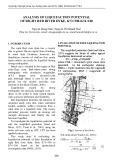


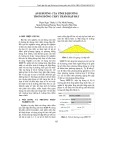



![Bài giảng Giáp xác chân mái chèo [mới nhất]](https://cdn.tailieu.vn/images/document/thumbnail/2025/20250927/lethihongthuy2402@gmail.com/135x160/92891759114976.jpg)



![Tài liệu học tập Chuyên đề tế bào [mới nhất]](https://cdn.tailieu.vn/images/document/thumbnail/2025/20250906/huutuan0/135x160/56151757299182.jpg)

